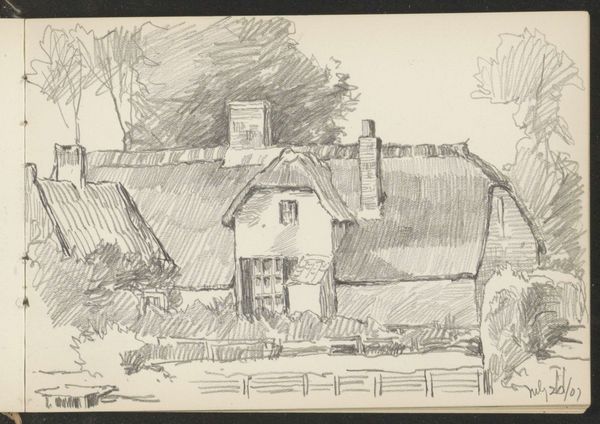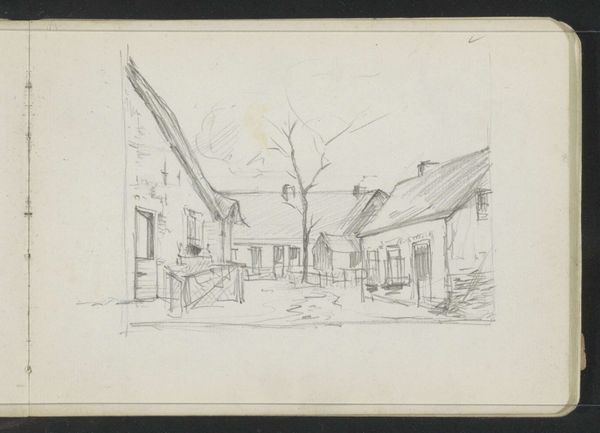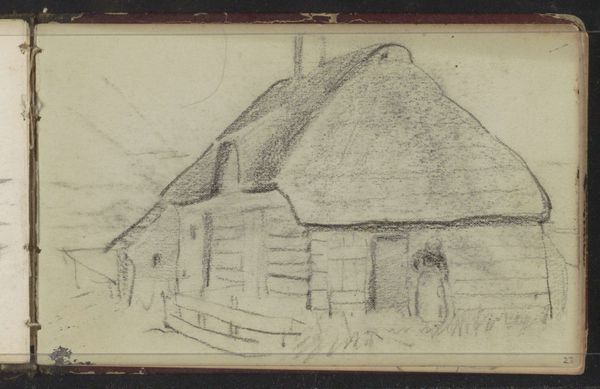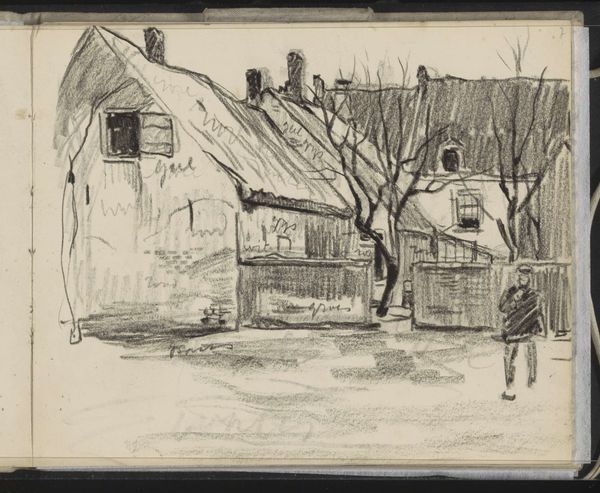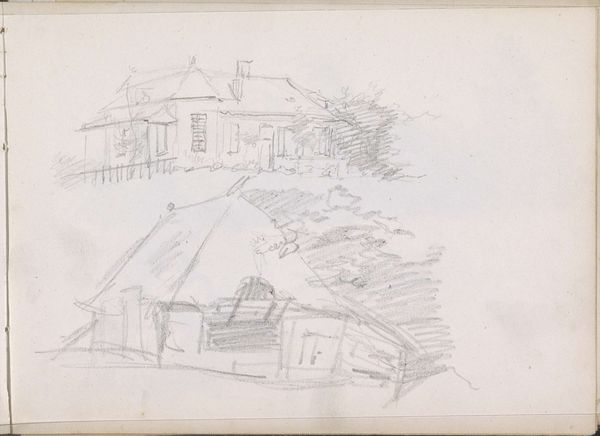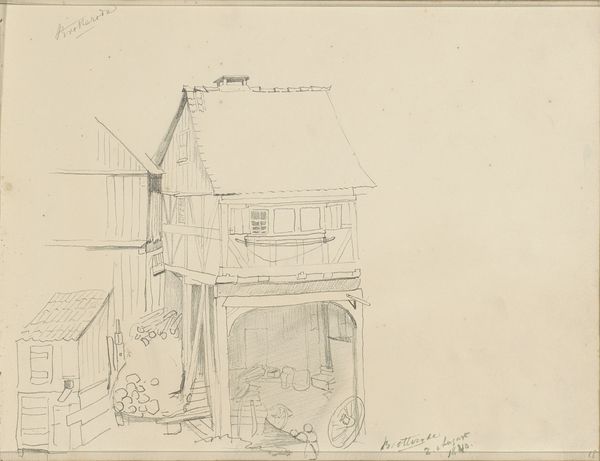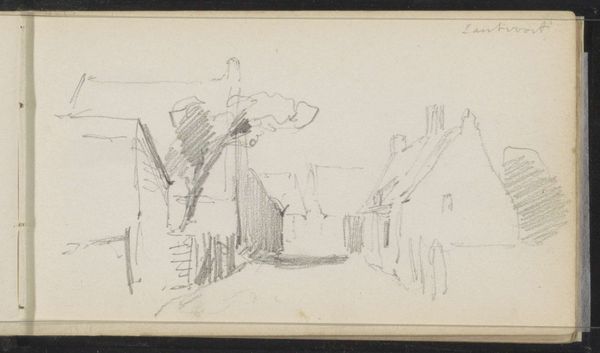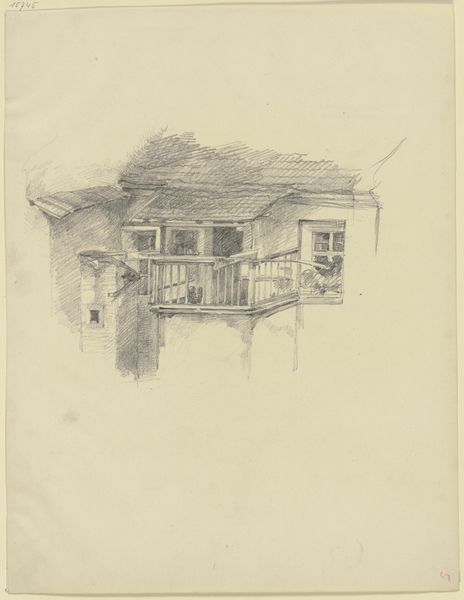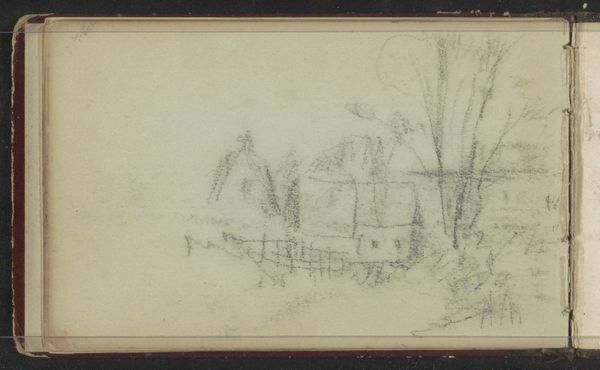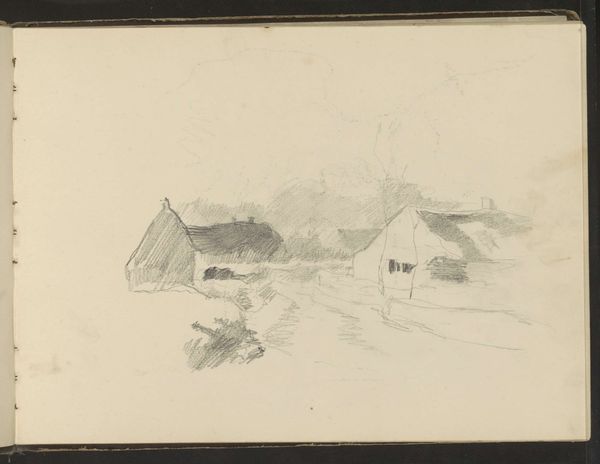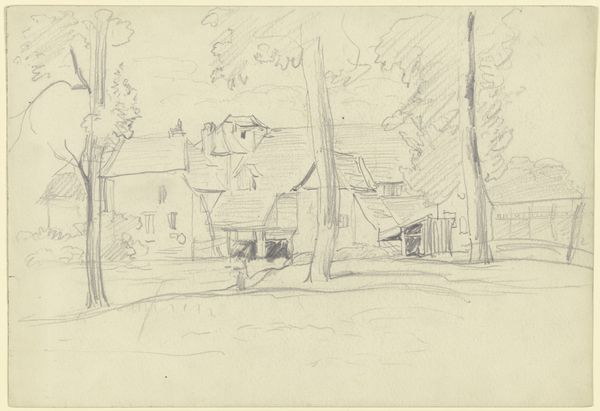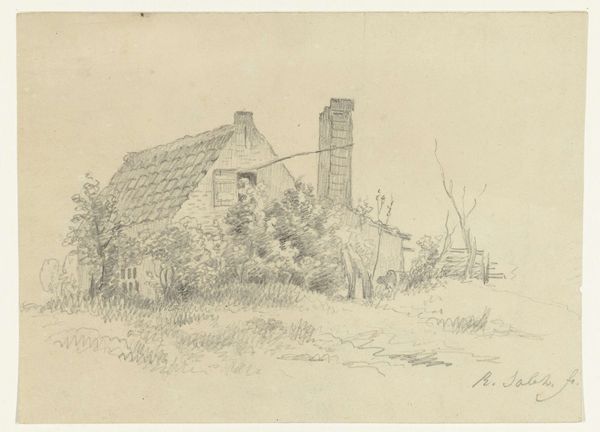
drawing, pencil
#
drawing
#
landscape
#
pencil
Copyright: Rijks Museum: Open Domain
Editor: This is "Boerenwoningen," farmhouses, by Johannes Tavenraat, created in 1873 using pencil. It looks like a quick sketch, very unassuming, but also quite intimate. What do you see in this piece? Curator: What I find striking is the implied social narrative embedded within such a seemingly simple landscape. Tavenraat isn’t just showing us buildings; he’s showing us homes, places of labor and life. The sketchiness, as you called it, underscores the impermanence of rural life for marginalized communities. Do you think the rustic, almost dilapidated look of the buildings conveys anything about the people who lived there? Editor: It does feel like there's a sense of poverty. I hadn't really thought about it that way, I was more focused on the artist's style. Curator: Exactly. And it's crucial to consider how these images participated in constructing ideas about the rural poor. These structures weren't just buildings; they were reflections of a societal attitude. Whose stories are centered, and whose are relegated to the background, in 19th-century Dutch landscape art? Editor: So, you're saying the drawing, while appearing neutral, actually plays a role in showing social inequalities? Curator: Precisely. We need to ask how representations of the rural poor contribute to or challenge dominant narratives. It prompts us to rethink ideas around "landscape" itself. Who has access to land? Who can build on it, and how is that visually represented? Editor: I've never considered art from that angle before, but it brings a whole new layer to understanding even seemingly simple drawings like this. Curator: It's about unveiling those power dynamics that are historically embedded in what we see as art.
Comments
No comments
Be the first to comment and join the conversation on the ultimate creative platform.
